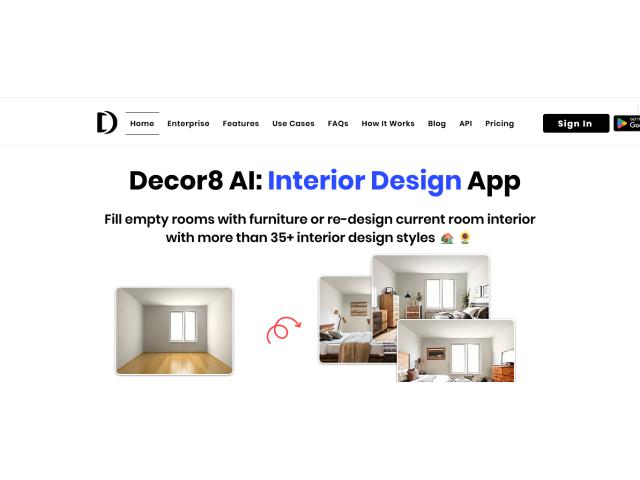
In recent years, the world of interior decor has undergone a significant transformation thanks to advancements in artificial intelligence (AI) and the emergence of innovative room design apps. These cutting-edge technologies are revolutionizing the way people approach interior design, making it more accessible, efficient, and personalized than ever before. Whether you're a professional interior designer or simply someone looking to revamp your living space, AI room design app offer a plethora of benefits that are reshaping the industry. In this article, we will explore how these apps work, the advantages they bring, and the impact they are having on the world of interior decor.
The Rise of AI Room Design Apps
Gone are the days when interior design was solely the domain of skilled professionals. With the advent of AI room design apps, anyone can now become the master of their own interior decor. These apps harness the power of AI algorithms to simplify the design process and provide users with an immersive and interactive experience.
One of the key features of AI room design apps is their ability to create virtual representations of real spaces. By inputting the dimensions and layout of a room, users can visualize various design concepts and try out different furniture arrangements without having to physically move any objects. This not only saves time and effort but also allows users to experiment and explore different styles with ease.
Moreover, AI room design apps leverage the vast amount of design data accumulated over the years to offer users a wide range of design options. From contemporary minimalism to vintage charm, these apps can generate a multitude of design suggestions tailored to individual preferences. By analyzing user input, such as color preferences, preferred furniture styles, and desired ambiance, these apps generate personalized recommendations that cater to each user's unique taste.
AI room design apps present a myriad of benefits that have transformed the interior decor landscape. Let's take a closer look at some of the advantages they bring:
1. Enhanced Visualization
One of the biggest challenges in interior design has always been envisioning the final outcome of a design concept. With AI room design apps, this hurdle is overcome by providing users with a realistic and immersive visualization of their design ideas. Users can see how furniture pieces fit together, visualize different color schemes, and even experiment with lighting options, all within the virtual representation of their room. This helps users make informed decisions and achieve their desired aesthetic effortlessly.
2. Time and Cost Savings
Traditionally, designing a room involved visiting multiple stores, browsing through countless catalogs, and coordinating with different suppliers. AI room design apps streamline this process by offering a comprehensive platform where users can access a vast collection of furniture and decor options from various retailers, all in one place. This not only saves time but also enables users to compare prices, take advantage of discounts, and make more cost-effective choices.
3. Personalization and Customization
Every individual has their own unique style and preferences when it comes to interior decor. AI room design apps recognize this and allow users to personalize their design choices according to their taste. By incorporating machine learning algorithms, these apps learn from user feedback and adapt their recommendations over time, ensuring a truly customized experience for each user.
4. Accessibility for All
AI room design apps have democratized interior design, making it accessible to a wider audience. No longer limited to a select group of professionals, these apps empower individuals without any design background to unleash their creativity and transform their living spaces. Whether you're a college student decorating a dorm room or a homeowner revamping your entire house, AI room design apps level the playing field and provide everyone with an equal chance to create stunning interiors.









0 Comment